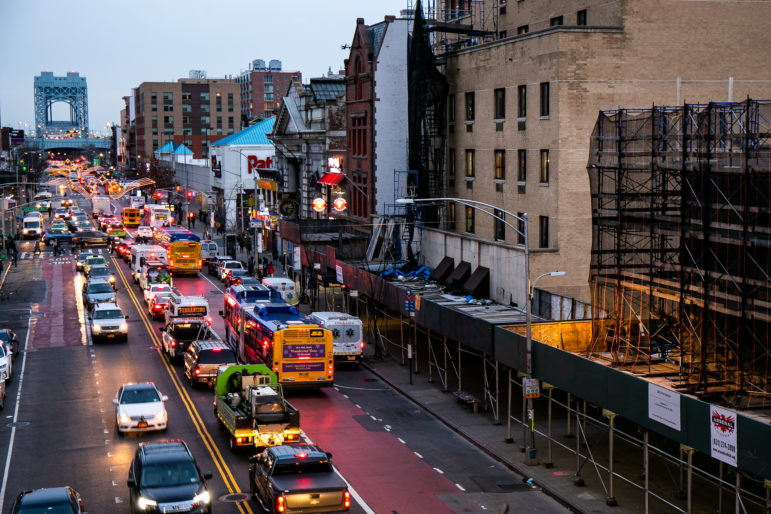Eric Adams and Andrew Yang were among the 2021 candidates who highlighted policy ideas as the campaign moved to within 50 days of election day.

Adi Talwar
Andrew Yang says he plans to shift away from Bill de Blasio’s strategy of primarily rezoning low-income neighborhoods like East Harlem to instead put new density into ‘transit-rich, high-income’ areas.The 2021 primary campaign has moved into its final 50 days, with only 40 to go until early voting begins, and the focus for most candidates has shifted away from unveiling new policies. Mayoral hopefuls Shaun Donovan and Maya Wiley are sending out daily reminders of some of the detailed policy ideas they’ve already proposed. Most candidates are focusing on rolling out endorsements (or, in one candidate’s case, seeing endorsements slip away). Still, a few big ticket ideas did come down the pipe in the past week or so, and we briefly note them below in this the 12th edition of our 2021 pre-primary “Policy Shop.”
Yang’s housing plan
Andrew Yang’s housing plan combines large financial and unit commitments—$4 billion in spending a year and 250,000 units produced over eight years—with dramatic changes to the way the city currently makes decisions about what to build and where. Yang calls for comprehensive planning system, but also a speedier land-use review process (“It’s counterproductive to waste months in one hearing after another, waiting for advisory votes, when we often know what the right thing to do is.”) He wants to end “member deference” and shift from Mayor de Blasio’s approach of rezoning mainly low-income communities of color to instead focusing on “transit-rich, high-income” neighborhoods. Yang’s plan also briefly mentions supportive housing and land trusts, and calls for legalizing accessory dwelling units, okaying micro-apartments, and recognizing co-living as a way to create new affordable space. In terms of income tiers, Yang targets the new housing at 80 percent AMI or below, with city capital support focused on families making less than 40 percent AMI.
Adams on childcare
One lesson driven home by the pandemic is just how difficult it is to perform virtually any job without adequate childcare—and for many primarily in-person careers, it is essential. It’s also hard to find and tough to pay for. Mayoral candidate Eric Adams believes that by offering incentives to property owners to give free space to childcare providers, he can bring the cost of childcare down enough to make it available to every family and essentially free to households making less than $100,000 a year—at least when other new federal and city subsidies are rolled in. The costs of those subsidies and incentives would be covered, Adams says, by renegotiating the expensive Manhattan leases that many city agencies are locked into and moving those offices to cheaper outer-borough space and making use of remote work. The Brooklyn BP estimates that over five years the city could save as much as $250 million—a quarter of its office leasing costs. It’s unclear whether the city’s leases and landlords will afford that much flexibility, and uncertain what impact that withdrawal from Manhattan might have on the larger office market, but Adams says his childcare program would target the lowest-income families in the neediest areas first.
Lander calls for gig rights
Perhaps the signal development in New York’s economy over the past decade is the increasing share of work that is not performed by employees, but rather by independent contractors. Comptroller candidate Brad Lander, a Brooklyn Councilmember, is touting a plan that, he says, will preserve the flexibility that drives some workers to seek “gig” employment while protecting independent workers from exploitation. It starts with developing a bright-line test—at the federal level—for reclassifying some independent workers as employees. Lander believes the city can create a minimum pay level for independent workers, and prohibit non-compete clauses and forced arbitration language in contracts. He also believes that since the feds are taking their time doing so, the city can create a package of portable benefits (like healthcare) that gig workers carry with them from job to job. This will be one of those issues where Lander, if elected, uses his bully pulpit rather than the direct powers of his new office: Lander’s six-page proposal only mentions the word “comptroller” once.
Stringer calls for one swipe
Echoing a report he put out as comptroller in 2018, mayoral candidate Scott Stringer highlighted a part of his transit plan that calls for charging a uniform fare for all transit in the city—subway, bus or commuter rail. Stringer’s earlier research indicated that MetroNorth and Long Island railroads have 18 stations in 13 neighborhoods that are not served by the subway at all, and another 20 stations in 18 neighborhoods that do have subways, but where the commuter rail lines could help reduce crowding. Stringer’s ‘18 report estimated the shift would cost $50 million a year.
Chang on disability equity
One of the challenges to confronting the considerable barriers facing disabled New Yorkers is the array of disabilities different people face, from visual and hearing deficits to mobility challenges to learning disabilities. Mayoral candidate Art Chang’s disability justice plan aims to address a range of those issues, from modernizing Access-A-Ride and making long-overdue delivery on a promise to improve sidewalks to addressing some of the deep flaws of special education by creating new District 75 schools and creating a “user-friendly” portal for parents to keep track of the Individualized Education Program (IEP) process.








